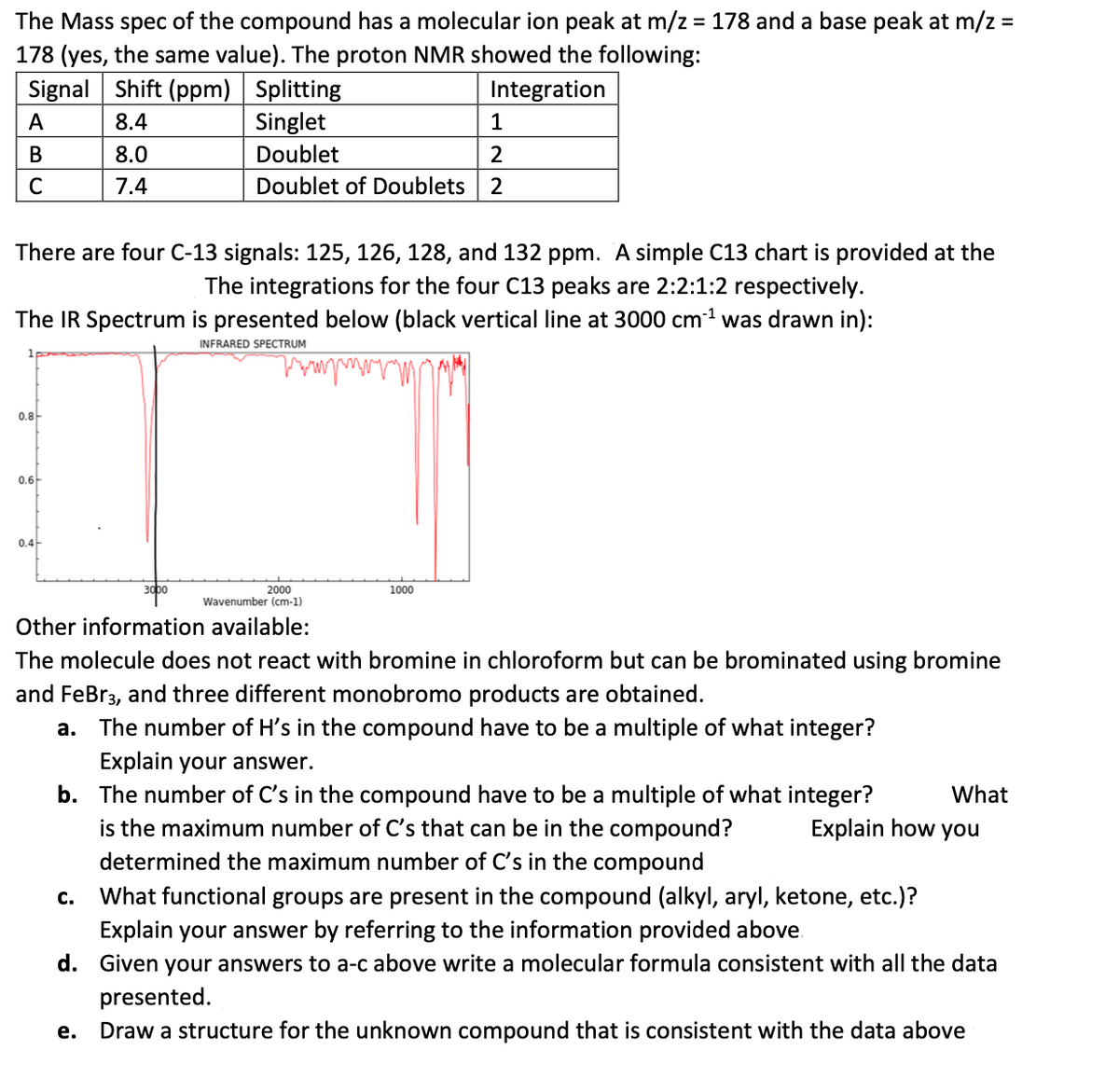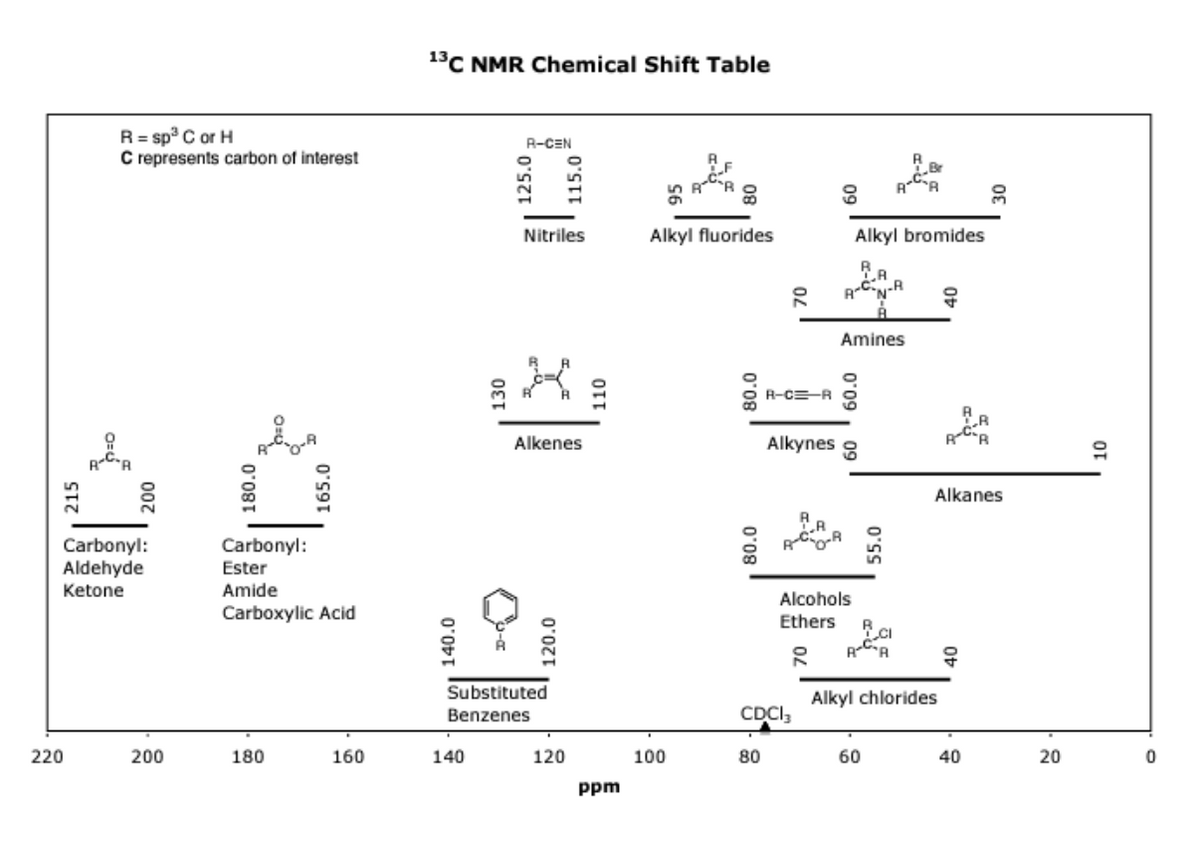The Mass spec of the compound has a molecular ion peak at m/z = 178 and a base peak at m/z = 178 (yes, the same value). The proton NMR showed the following: Signal Shift (ppm) Integration 8.4 A B C 0.8 There are four C-13 signals: 125, 126, 128, and 132 ppm. A simple C13 chart is provided at the The integrations for the four C13 peaks are 2:2:1:2 respectively. The IR Spectrum is presented below (black vertical line at 3000 cm³¹ was drawn in): INFRARED SPECTRUM 0.6 0.4 8.0 7.4 Splitting Singlet 1 Doublet 2 Doublet of Doublets 2 C. e. 2000 Wavenumber (cm-1) Other information available: The molecule does not react with bromine in chloroform but can be brominated using bromine and FeBr3, and three different monobromo products are obtained. a. The number of H's in the compound have to be a multiple of what integer? Explain your answer. b. The number of C's in the compound have to be a multiple of what integer? is the maximum number of C's that can be in the compound? determined the maximum number of C's in the compound 1000 What What functional groups are present in the compound (alkyl, aryl, ketone, etc.)? Explain your answer by referring to the information provided above. d. Given your answers to a-c above write a molecular formula consistent with all the data Explain how you presented. Draw a structure for the unknown compound that is consistent with the data above
Analyzing Infrared Spectra
The electromagnetic radiation or frequency is classified into radio-waves, micro-waves, infrared, visible, ultraviolet, X-rays and gamma rays. The infrared spectra emission refers to the portion between the visible and the microwave areas of electromagnetic spectrum. This spectral area is usually divided into three parts, near infrared (14,290 – 4000 cm-1), mid infrared (4000 – 400 cm-1), and far infrared (700 – 200 cm-1), respectively. The number set is the number of the wave (cm-1).
IR Spectrum Of Cyclohexanone
It is the analysis of the structure of cyclohexaone using IR data interpretation.
IR Spectrum Of Anisole
Interpretation of anisole using IR spectrum obtained from IR analysis.
IR Spectroscopy
Infrared (IR) or vibrational spectroscopy is a method used for analyzing the particle's vibratory transformations. This is one of the very popular spectroscopic approaches employed by inorganic as well as organic laboratories because it is helpful in evaluating and distinguishing the frameworks of the molecules. The infra-red spectroscopy process or procedure is carried out using a tool called an infrared spectrometer to obtain an infrared spectral (or spectrophotometer).


Trending now
This is a popular solution!
Step by step
Solved in 3 steps with 1 images




